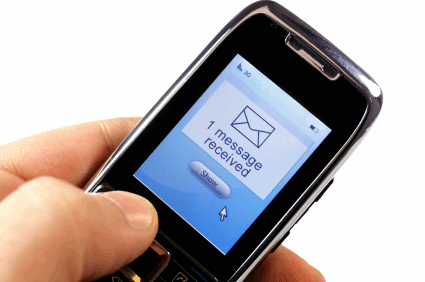22 years SMS system

22 years ago, on December 3, 1992, Neil Papworth, a young engineer, sent a greeting to his colleague Richard Jarvis. And it would not be so important if this message were not the first SMS message in the world. But then, 22 years ago, no one could have imagined how important a short message in the communications world would be.
Now SMS brings billions in revenues to telecommunications companies around the world. In 2016, it is estimated that over 9 trillion messages will be transmitted. And in 92, the first message was the result of seven years developing a standard for messaging. In 1985, the German engineer Friedhelm Hillebrand, who was the chairman of the non-voice services development committee for the Global System for Mobile Communications (GSM), developed a text messaging system over cellular networks. At that time, cell phones were only in cars.
Hillebrand, with a team of engineers, invented using an existing radio channel to transmit messages, which was used only to transmit information about the signal strength to the phones, and was idle most of the time. In a 2009 interview with the LA Times, he said: “We needed a cheap implementation. On this channel, most of the time, nothing happens - it was just the free capacity of the system. ”
')
At first, the team managed to cram up to 128 characters in one message. It seemed to them that was not enough, and switching to 7-bit coding, they brought the number to 160. There was no marketing research on that topic at that time, so engineers tried to empirically find out if there were enough 160 characters for a short message. Having studied the typical postcards of that time and the messages transmitted by the Telex system (which had no technical limitations, but nevertheless, the length of the messages usually did not exceed this limit), they decided that 160 would be "absolutely enough."
In addition, the inconvenient system with the location of several letters on the same button of the phone in the absence of predictive typing algorithms such as T9, clearly indicated the absence of the need to transfer long texts. Papworth said in an interview with TechCrunch : “We tested the system with 160 characters, but who needs more characters to send a message like“ If you are not at home in 20 minutes, is your dinner in a dog ”? Moreover, T9 did not exist then. ”
Strange as it may seem now, it took the mobile operators quite a long time to guess the possible profits from this technology, especially from the fees from messages sent between different networks, and not to use it just to notify you about voice mail. And technology quickly gained popularity and became the main means of communication for teenagers in the 90s and 00s. And still, despite the availability of the Internet in every smartphone and the abundance of different instant messengers, if you need a guarantee that your message will reach any of your friends and relatives - SMS is still out of competition.
Source: https://habr.com/ru/post/364095/
All Articles